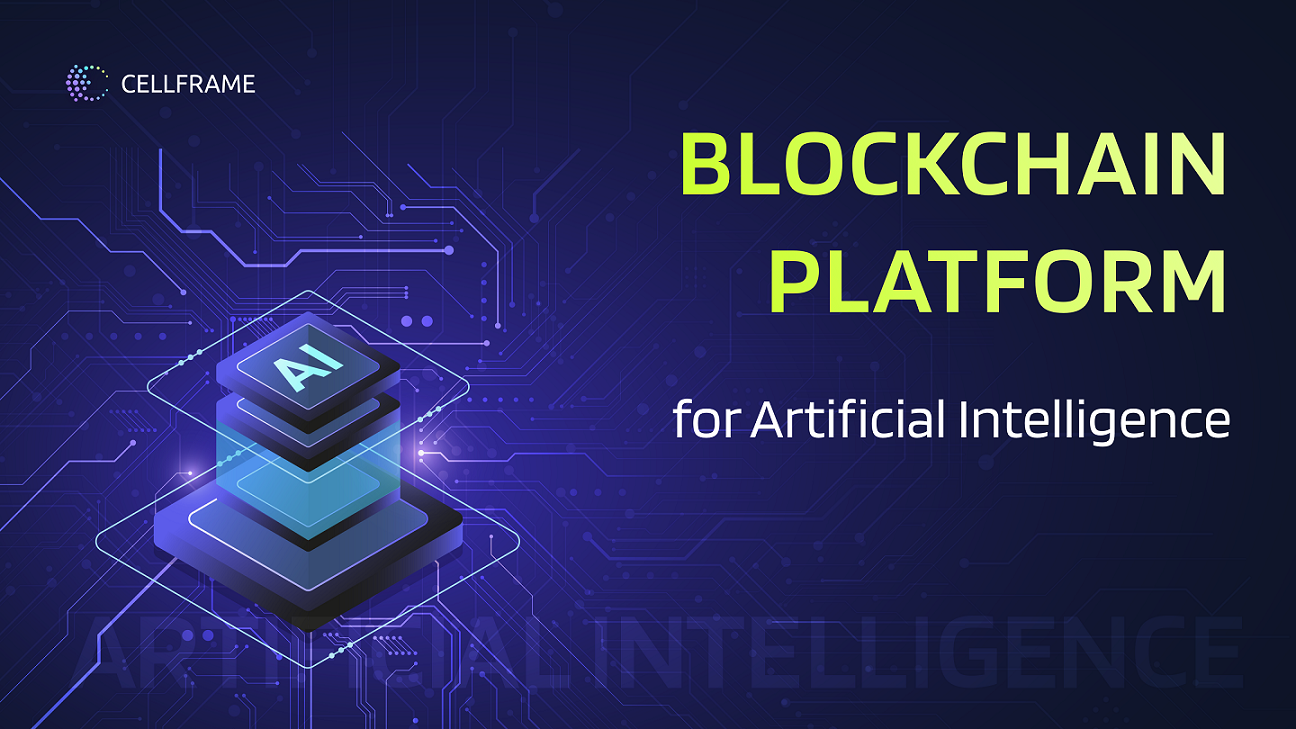Increasing the Accessibility of AI Technology
Category: About

How can we make working with artificial intelligence technology more democratic, transparent, and open to the wider public? At Cellframe we plan to create a solution to this problem: a platform for building AI applications in the Cellframe ecosystem.
A major boom in AI development is currently underway. Working AI apps have become part of daily life: voice assistants, photo editors, search engines. The list can go on and on, and the success of ChatGPT has taken the popularity of AI to a new level.
However, building AI-based apps takes a huge amount of resources: big data sets, large investment, and huge amounts of computing power. Such resources are now available only to global IT titans like Google and Microsoft. It’s already difficult for startups or independent developers to compete in this field, and this gap is only increasing. Cellframe is developing a platform for building decentralized AI apps in our blockchain ecosystem. The aim of this initiative is to help developers at all stages of building AI apps:
- Collecting and storing big data for AI training
- Training AI models
- Deploying and supporting AI models
AI developers will be able to take advantage of this system at all stages of the development process, or use it for just one of the stages.
System architecture
Cellframe is a service-oriented blockchain platform. We’ve created a software development kit (SDK), which offers a full suite of development tools for building decentralized apps on Cellframe.
In addition to standard elements like libraries and tools for launching and debugging, the Cellframe SDK includes a general-purpose API responsible for interacting with nodes on the blockchain network. It also includes a single API for launching and collecting fees for services via the blockchain. This enables community members who operate nodes to earn tokens by providing services (computing power) from their devices. Customers can also choose their provider and pay for services via the blockchain.

This architecture is already implemented in our decentralized VPN service KelVPN as well as ConfCall, our peer-to-peer videoconferencing app. You can find details about the latter in this article.
A blockchain infrastructure for building AI applications
Cellframe has created a toolkit for working with AI-based apps and all the attendant tasks (training and deploying machine learning models), which we plan to integrate into our SDK. When this is complete, our AI platform will become fully operational. Developers will be able to use Cellframe’s blockchain infrastructure for a variety of AI tasks, and node operators will begin to receive rewards for providing computing power.

Crucially, service providers participating in training models and running services can do so using a wide variety of systems, from the smallest Raspberry Pi to large mining arrays. Both types of machines have video cards, and both will be able to find appropriate tasks as service providers. AI-related calculations are varied, and far from all of them require large amounts of computing power.
In cases where serious computing power or large data sets are required, such as for training ML models, we also have a solution. The Cellframe blockchain’s architecture makes it possible to break up tasks and distribute them among nodes. Conversely, tasks can be grouped together if necessary.

On the organizational side of things, the pooling of resources for solving certain tasks can be decided on through voting processes. In fact, providing resources directly is not the only option: users can choose to invest tokens to pay for computing power from a third party.
If a group within a community decides to do so, they can create a structure for joint ownership of a given algorithm. If an algorithm that was trained by a community pool goes to production, each participant can receive a share of all profits earned from that algorithm. The size of one’s share of profits will be calculated individually in proportion to one’s contribution.
Ultimately, blockchain networks can provide a wide range of possibilities for creating, growing, and deploying AI algorithms. The only challenges remaining are to properly organize the process and complete work on certain technical aspects, which the Cellframe team is currently working on. We hope that our platform will lower the barrier to entry for the AI industry and make this technology truly open and accessible.
Recent news
-
Worklog Update. 22.03–18.04
20 Apr 2023
-
AMA with CEO Dmitry Gerasimov: 13 April 2023
17 Apr 2023
-
Worklog Update. 01.03–21.03
23 Mar 2023
-
AMA with CEO Dmitry Gerasimov: March 16, 2023
20 Mar 2023
